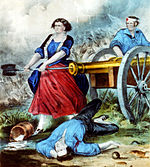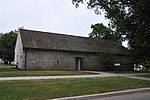Old West, Dickinson College
1822 establishments in PennsylvaniaBenjamin Henry Latrobe buildings and structuresBuildings and structures in Cumberland County, PennsylvaniaDickinson CollegeNational Historic Landmarks in Pennsylvania ... and 3 more
National Register of Historic Places in Cumberland County, PennsylvaniaSchool buildings completed in 1822Use mdy dates from August 2023

Old West was the first building to be erected on the campus of Dickinson College in Carlisle, Pennsylvania. It was designed by Benjamin Henry Latrobe in 1803, completed in 1822, and is a fine example of Federal period architecture. It was designated as a National Historic Landmark in 1962 for its architecture and its association with Latrobe.
Excerpt from the Wikipedia article Old West, Dickinson College (License: CC BY-SA 3.0, Authors, Images).Old West, Dickinson College
South West Street,
Geographical coordinates (GPS) Address Phone number Website Nearby Places Show on map
Geographical coordinates (GPS)
| Latitude | Longitude |
|---|---|
| N 40.203 ° | E -77.1952 ° |
Address
Dickinson College
South West Street
17030
Pennsylvania, United States
Open on Google Maps




